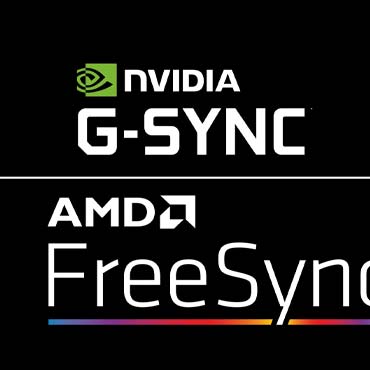From their names, we can tell that they are very popular in small display devices, especially in electronic devices such as watches, tablets, and phones.
Because the two are similar in meaning, people often compare them. We have received many messages from readers asking us to explain the relationship and differences between mini LED and micro LED. Next, let’s take a closer look.
Definition of Mini LED
Mini LED can be seen as a “miniaturized” version of LED. Currently, there is no clear standard for mini LEDs, and different LCD manufacturers have their own standards.

According to the “General Technical Specifications for Mini-LED Displays” issued by China[1], the standard of mini LED is defined as: LED devices with a chip long side size between 50~300 um.
References
1: This industry specification was jointly drafted by twelve companies/institutions including Leyard Optoelectronics Co., Ltd., BOE Technology Group Co., Ltd., Zhongguancun Semiconductor Lighting Engineering Research and Industry Alliance, etc.
REFERENCES LINK:General Technical Specifications for Mini-LED Displays
Definition of Micro LED

Micro Light Emitting Diode, abbreviated as Micro LED, refers to further miniaturizing the LED structure, with a size of only around 1 to 10 µm. It is not only much smaller than mini LED but also much more difficult to manufacture.
What are the differences between Mini LED and Micro LED?

From the definition of the two, micro LED is much smaller than mini LED. Next, we will compare the differences between the two in depth from multiple dimensions.
Mini LED vs. Micro LED: Picture clarity
The picture clarity of the displays made by mini LED and micro LED is very high, and we cannot feel the difference with the naked eye. However, since the chip of micro LED device is between 1~30 um, it can show more fine details, which can be more effective for designers or special effects synthesizers.
Mini LED vs. Micro LED: Energy saving and environmental protection
Although LCD TVs with LED backlight are more energy-efficient than traditional LCD TVs, they are still not as good as LCDs with mini LED backlight technology. Because LCD TVs using mini LED technology have more uniform and efficient light points, not only have they greatly improved in brightness and contrast, but they are also more energy-saving and environmentally friendly. Therefore, mainstream TV manufacturers (such as Samsung, LG, TCL, etc.) have launched TVs using mini LED technology.
Mini LED vs. Micro LED: Thin and Light
Since the light source (LED) of mini LED is reduced and the internal space is not needed, mini LED TVs are often thinner and lighter than traditional TVs. Compared with micro LED, the difference between the two is not much. If cost is not a consideration, micro LED may become thinner and lighter.
Mini LED vs. Micro LED: Integration
Since Micro LED is small in size, it can be integrated in many places. In addition to the familiar electronic products such as watches and mobile phones, it can also be used in micro-projection, electron microscopes and other equipment.
In addition, it can also be made into a large-screen display like mini LED, so it is more widely used in the market.
Mini LED vs. Micro LED: Service Life
Mini LED is reduced on the basis of LED, and its energy loss is further reduced, so its service life will be longer than that of ordinary LED. You should know that the life of LED is very long, and it is generally no problem to use it normally for more than 10 years.
After being made into mini LED, its service life is further improved, and it is normal to use it for 7–8 years. As for Micro-LED, it is not only simple in structure, but more importantly, it has almost no light energy loss, and it is normal to use it for 20–30 years.
Mini LED vs. Micro LED: Size
The size of micro LED is much smaller than that of mini LED. The chip of mini LED device is about 50~300 um, while the chip of micro LED device is about 1~10μm. Mini LED is much larger than micro LED, and the size difference between the two is large.
The size of mini LED can be flexibly controlled. Compared with micro LED, it is easier to make large screens. Therefore, mini LED displays launched by various LCD manufacturers can be seen on the market, ranging from 27 inches to 130 inches. But it is difficult to see large-sized micro LED displays.
Mini LED vs. Micro LED: High luminous efficiency
The luminous efficiency and luminous energy density of a LED are closely related to its size, which means that the smaller the LED is, the higher its luminous efficiency and luminous energy density. Compared with other mini LEDs or OLEDs, the luminous efficiency and luminous energy density of micro LED are currently the highest. As long as it can be made smaller, there will be room for improvement.
Mini LED vs. Micro LED: Technology
As the backlight source of liquid crystal, mini LED is mainly used in LCD TVs, LCD computers and other LCD-related devices. Unlike LED, micro LED integrates all the properties of LED, including the ability to emit light by itself, so it can be used not only on LCD devices, but also on other electronic devices such as watches and car displays.
Mini LED vs. Micro LED: Response speed
Micro LED has an extremely fast response speed, and can respond almost instantly after power-on, while mini LED requires a certain amount of reaction time. Although this time is extremely short, it is definitely not as good as micro LED.
Mini LED vs. Micro LED: Price
Mini LED has made great improvements in picture quality, power consumption, appearance, etc., opening up a new track in the field of commercial display and becoming one of the important display technologies favored by TV manufacturers.
However, Micro LED performs better in these aspects, so its price is naturally much higher than that of mini LED. It is precisely for this reason that there are very few large TVs or large screens made with micro LED technology on the market.
Mini LED vs. Micro LED: Application Field
Due to technical differences, the application fields of the two are clearly differentiated. Mini LED is suitable for large-screen TVs and background walls that are viewed at close range, while micro LED is more suitable for precision display instruments, wearable devices and other fields.
How to Choose Between Mini LED and Micro LED?
Perhaps because display manufacturers confuse the two, many users are unsure how to choose. Compared to UHD vs. OLED, this choice is much simpler.
First, the most obvious point is that under the same size, micro LED is much more expensive than mini LED. Secondly, large-screen micro LEDs are very rare and generally hard to buy. Finally, since both have exceeded the human eye’s perception range, we cannot feel the difference in actual use without using instruments to test. Therefore, there is no need to be overly entangled, just choose mini LED.




